Purple orchids: types and care

Orchid can be called one of the most popular indoor plants. Today, a large number of different types of this floral representative are known, each of which has its own special characteristics. The purple orchid looks especially elegant, which can be both a wonderful interior decoration and an unforgettable gift.

Peculiarities
The purple orchid belongs to the hybrid forms of the plant, so it has adapted well to living at home. The main feature of this species can be called flowers with a purple color. Their shade can be different, ranging from light lilac to deep purple. In another way, the plant is called phalaenopsis violation. In some cases, artificial coloring of colors can be carried out by injecting specially designed ink into the peduncles.

Violet orchid is characterized by the presence of a solid peduncle, that is, a shoot where flowers are formed. When the paint is injected into the growth point, the foliage is stained. The flower of the plant can be recognized by its pleasant, well-defined scent, which is similar to bergamot and a jug. The flower reaches 6 centimeters wide, the petal has an oblong oval shape, its surface is smooth and covered with a waxy bloom.
The difference between the purple orchid from other species is the small number of flowers. It blooms year-round, most intensely from spring to autumn. The foliage of a houseplant is large, fleshy with an oblong elliptical shape. The end can be pointed or blunt. An adult boasts leaves up to 0.3 meters long and 0.15 wide.
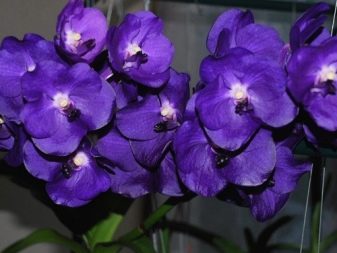
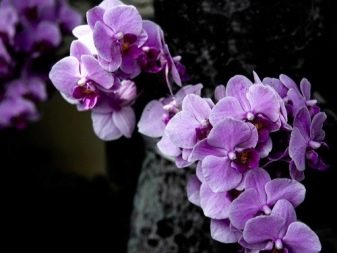
Types and varieties
Lilac and purple orchids are quite common not only in nature, but also at home. Phalaenopsis flowers resemble a butterfly and can have different shades, for example, lilac, purple, dark purple, lilac, there are specimens with spots, that is, spotted orchids, their names are different.
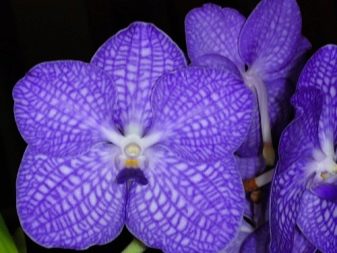
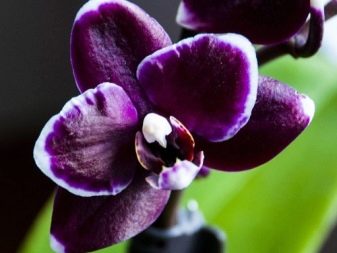
"Wanda"
This purple orchid variety is called bearded, all due to the development of a root system that resembles a beard. Under domestic conditions, the plant is also able to grow a long air root system. The variety thrives on blocks and does not require soil. The stem of "Vanda" has a cylindrical shape, and the foliage is dense. The sizes of the flowers are very different, while they smell pretty nice and are colored purple.


"Dendrobium"
The Dendrobium Orchid is compact, its flowers are purple. As for the form, epiphytic is predominant. In nature, you can observe how this type of plant lives, attaching to a tree, root or branch, but not parasitizing at the same time. This variety is characterized by an upright shoot, which after a while can become creeping. Each of the peduncles is formed from four flowers that reach 8 centimeters in diameter. The location of the foliage can be located both in the upper half of the stem, and evenly located on it. The shape of the leaves is presented in the form of a stretched ellipse, their structure is quite dense.
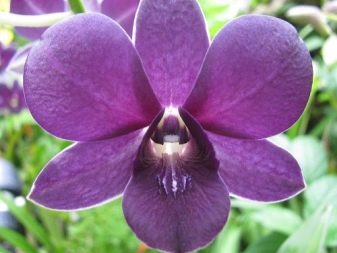
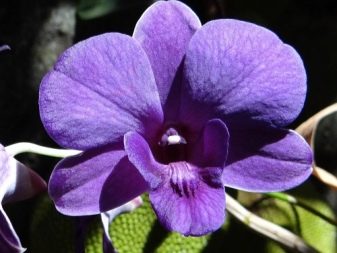
"Cattleya"
This variety can be attributed to the most spectacular and capricious. This plant is demanding on growing conditions and requires special care.Flowers of this variety can be painted in different shades ranging from deep purple to bright red. The Cattleya has a dedicated organ that stores nutrients. Common purple orchids include many varieties, for example, "Cattleya Lipped", "Bowringa", "Ekland", "Eclipse" and others.
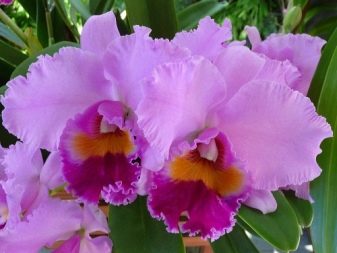
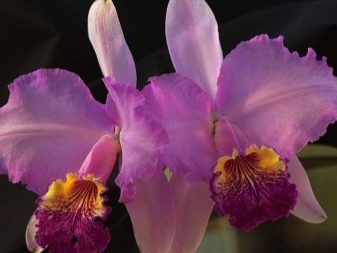
"Bletilla"
The orchid of this variety has Chinese and Japanese roots. Its foliage is colored green, but at the same time it is quite variegated. The flowers are beautiful, they are pink-purple in color. The orchid does not bloom every year, so it needs proper care.
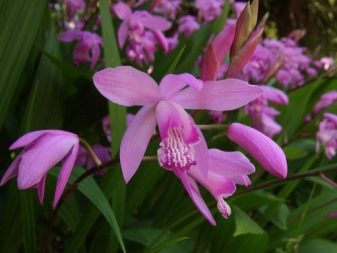
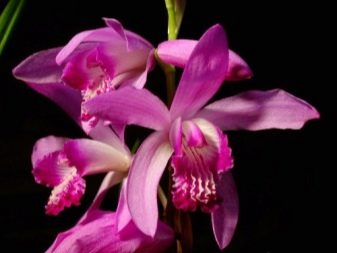
Landing
Orchids that have undergone the move from store to home have experienced real stress. The first thing to do in this situation is to put the plant through the quarantine regime, which can take up to two weeks. A new houseplant is worth watching, as it can infect others with some kind of infection. If a flowering individual is purchased, then it should be transplanted only after flowering.
Planting phalaenopsis violet should be carried out in a pot that is large and characterized by resistance. This is necessary for the normal development of the root system, which is developing rapidly.
The best option would be to choose a transparent container that is equipped with side drainage holes.
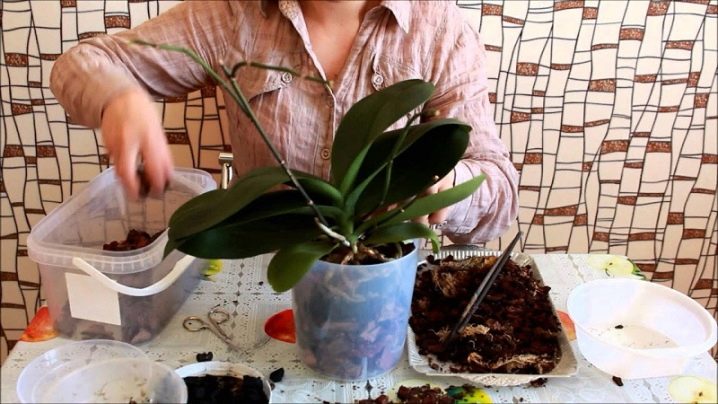
For growing orchids, it is better to use a special substrate that you bought in a store. This mixture should be designed specifically for this type of plant. You can independently make such a substrate from the following components:
- sphagnum moss;
- charcoal;
- pieces of pine bark;
- expanded clay.
It will not be superfluous to add fern roots to the substrate, as well as peat. Such additions limit the application of dressings. The purple orchid is good for diffused sunlight, but direct sunlight is detrimental to it, as it can cause burns to both leaves and flowers. Penumbra is a favorable place for the normal growth and development of this plant.
Phalaenopsis is a thermophilic representative of the fauna, so in the daytime it needs plus 25 degrees, and at night - plus 15.
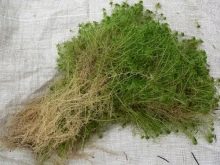

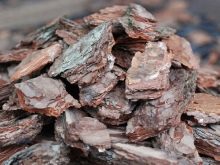
If you want to decorate your home with purple indoor flowers, you should give preference to windows that face east or west. And also do not forget about the need for airing the room and limiting drafts.
Orchid transplant should be done only as a last resort. If there is no need for that, then phalaenopsis should be transplanted once every 3 years. It is necessary to carry out this procedure at the beginning of spring, before the active phase of flower growth and root growth begins. When the plant grows in size, it should be transplanted into a larger pot by transshipment. The transplant procedure consists of the following stages:
- the flower must be carefully removed from the pot, while holding its root system;
- the plant is placed in a new pot, where a previously prepared substrate is located;
- it is required to carefully straighten the roots, but do not compact the soil;
- you need to insert a stick into the pot, to which the stem is fixed using a wire.
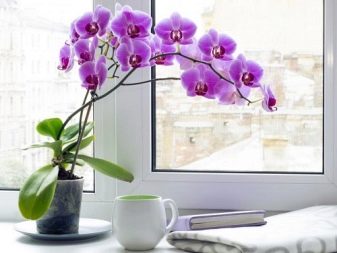
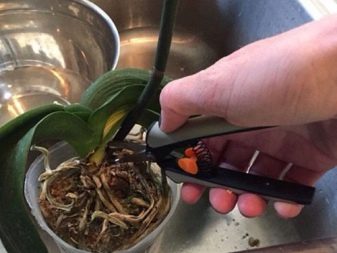
Care
In order for the purple orchid to please the eye all year round, it must be properly cared for. At the same time, the rules for caring for each variety are individual, this should be taken into account. Consider the features of caring for the most popular varieties.
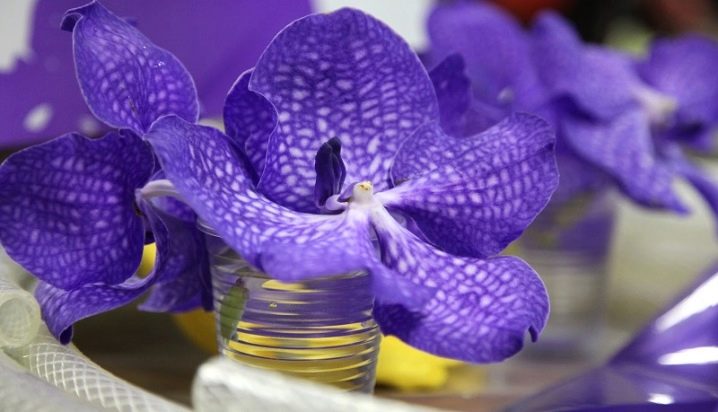
"Wanda"
Since the temperature regime has a direct effect on the immune system of the orchid, it must be optimal. The room temperature should be at the same level - plus 25 degrees. If it drops by 5 degrees, then this can lead to stress or illness in the indoor flower. This type requires air humidity of 60 percent and no less.
Watering and spraying "Wanda" should be strictly in the morning, while the water should be at room temperature and be characterized by hardness.
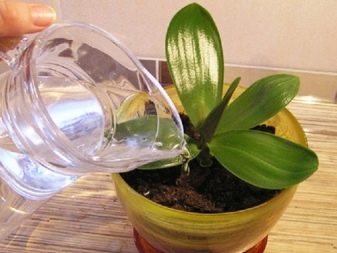
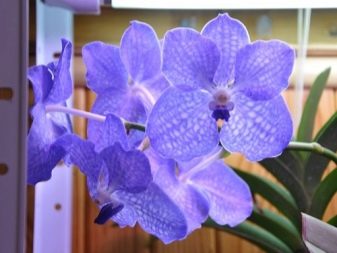
"Dendrobium"
A feature of this variety is that it thrives at lower temperatures than other orchids. The optimal daily rate is plus 25 degrees, but if it decreases, then the plant will not suffer from this. The flower is favorably treated with a high air humidity of 60 percent. In the summer, "Dendrobium" needs spraying, but you should not allow water stagnation, as this can lead to decay of the root system.
For spraying, it is worth using exclusively soft water. Drafts are quite dangerous for an orchid, but the room should definitely be ventilated. In the vicinity of the orchid, it is worth placing a chistmouth.
The rest of the phalaenopsis species develop well at a temperature of 17 degrees Celsius, but the optimal one is 25-28. The plant needs shade or diffused lighting. Watering should be done once every 10 days. The room must be ventilated, as well as keep the air humidity at least 40 percent.
It is necessary to feed the orchid when the plant intensively builds up its green mass, and flowers begin to appear on it.


Diseases and pests
Orchid refers to flowers that are quite susceptible to disease and pest attacks. Non-communicable diseases appear with excessive or improper care, which is expressed in the following points:
- burning foliage and flower in direct sunlight;
- excessive moisture;
- low air temperature in the room, which entails freezing of a representative of the flora;
- low light;
- steaming, which leads to wilting.
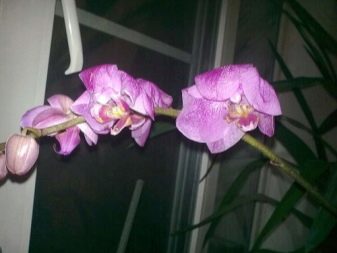
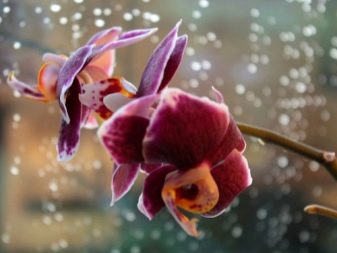
They cause the weakness of the plant, which subsequently leads to death. Phalaenopsis often affects bacterial spotting, rot, viruses, anthracnose, and fusarium. Pruning affected foliage, as well as spraying with drugs, can save the orchid from such infections.
And also the plant can be attacked by the following parasites: centipede, wood lice, earthworm, ant, thrips, snail, cockroach, tick, scale insect, whitefly, aphid, nematode.
For prophylaxis, after buying an orchid, it is worthwhile to conduct a thorough examination of it for the presence of pests, if there are any, it is necessary to immediately spray with effective preparations.
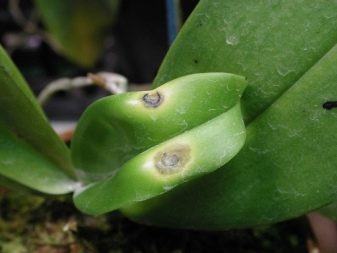

You can read about possible diseases of orchids and how to treat them below.































The comment was sent successfully.